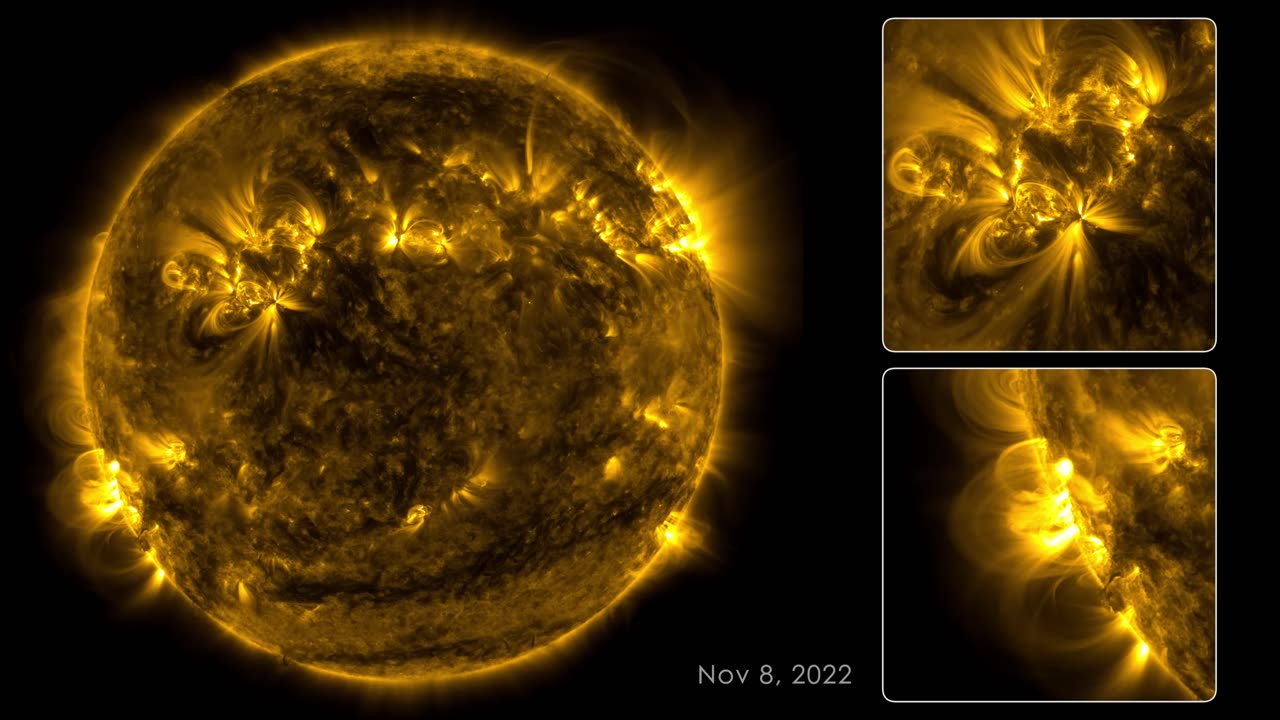Premium Only Content

133 Days on the Sun
This video chronicles the solar activity that occurred between August 12 and December 22, 2022, as captured by NASA's Solar Dynamics Observatory (SDO). Positioned in space orbiting around Earth, SDO has diligently recorded the Sun's behavior in impressive 4K x 4K resolution for almost 13 years. This wealth of data has led to numerous groundbreaking discoveries about the inner workings of our nearest star and its impact on the solar system.
Equipped with a trio of instruments, SDO captures a snapshot of the Sun every 0.75 seconds. One of these instruments, the Atmospheric Imaging Assembly (AIA), captures images every 12 seconds at ten distinct wavelengths of light. The time-lapse presented here spans 133 days, specifically focusing on images taken at a wavelength of 17.1 nanometers—an extreme-ultraviolet wavelength that exposes the Sun's outermost atmospheric layer, known as the corona.
By compiling images taken 108 seconds apart, this video compresses four months' worth of solar observations into a concise 59-minute presentation. Within this footage, viewers can witness the movement of bright active regions across the Sun's surface as it rotates, a process that takes roughly 27 days for one complete rotation. The striking loops extending above these bright regions are magnetic fields that have entrapped hot, luminous plasma. These bright areas also serve as the origin of solar flares, which manifest as brilliant flashes when magnetic fields swiftly reconnect—a phenomenon known as magnetic reconnection.
Although SDO has maintained an unwavering focus on the Sun, there have been instances where it missed capturing data. Some of the dark frames in the video result from Earth or the Moon momentarily obstructing SDO's view as they pass between the spacecraft and the Sun. Others are due to temporary instrumentation issues or data errors. It's noteworthy that SDO transmits a staggering 1.4 terabytes of data to Earth daily.
The images where the Sun appears off-center occurred when SDO was in the process of calibrating its instruments. Looking ahead, both SDO and other NASA missions will continue to diligently monitor our Sun, providing further insights into our position in space and crucial information to ensure the safety of our astronauts and space assets in the years to come.
-
 2:55:43
2:55:43
TimcastIRL
4 hours agoTrump DOJ To Ban Trans People From Owning Guns After Catholic School Shooting | Timcast IRL
149K89 -

The Quartering
4 hours agoBaldur's Gate 3 First Playthrough!
26.8K4 -
 LIVE
LIVE
Rallied
6 hours ago $0.22 earnedWarzone Solo Challenges
427 watching -
 57:40
57:40
MattMorseTV
5 hours ago $0.21 earned🔴Trump just SHATTERED the RECORD.🔴
39.1K85 -
 43:39
43:39
WickedVirtue
3 hours agoLate Night Spooky Plays
12K1 -
 2:04:02
2:04:02
Glenn Greenwald
6 hours agoTrump and Rubio Apply Panama Regime Change Playbook to Venezuela; Michael Tracey is Kicked-Out of Epstein Press Conference; RFK Senate Hearing | SYSTEM UPDATE #508
99.7K114 -
 58:36
58:36
Total Horse Channel
8 hours ago2025 CSI3* A Coruña Porsche - Grand Prix
22.6K -
 2:10:32
2:10:32
megimu32
4 hours agoOTS: Mighty Morphin Power Rangers & the 90s Movie That Defined a Generation
21.5K11 -
 1:14:53
1:14:53
Badlands Media
19 hours agoThe SITREP Ep. 128
39.5K8 -
 2:44:56
2:44:56
BubbaSZN
4 hours ago🔴 LIVE - FORTNITE WITH NEW KEYBOARD
14.3K1